Are you considering growing hellebores in pots or containers but unsure where to begin? Container gardening is an excellent way to introduce plants to your garden when you don’t have enough space in your beds or flower gardens.
Spring containers are particularly delightful as they bring vibrant colors to the start of the gardening season. Many spring bulbs, annuals, and perennials bloom for only a short time, but hellebores are easy to grow and increasingly popular for spring container gardens.
Hellebores are standout perennials for spring, making them a great complement to seasonal flowers when placed in containers. They can also shine on their own. With a wide variety of colors, hellebores offer many options for mixing and matching with other potted plants.
If you’re planning to add hellebores to your containers, there are a few essential things to consider. Read on for our top tips to ensure your containers bloom beautifully this season!
Timing
In spring, when garden centers start showcasing potted daffodils and pansies, you’ll likely find hellebores available as well.
If you’re new to growing hellebores, you’ll probably be buying them from a garden center during spring. If you’ve grown them before, now is the perfect time to divide your larger plants and use them in other parts of your garden or in containers.
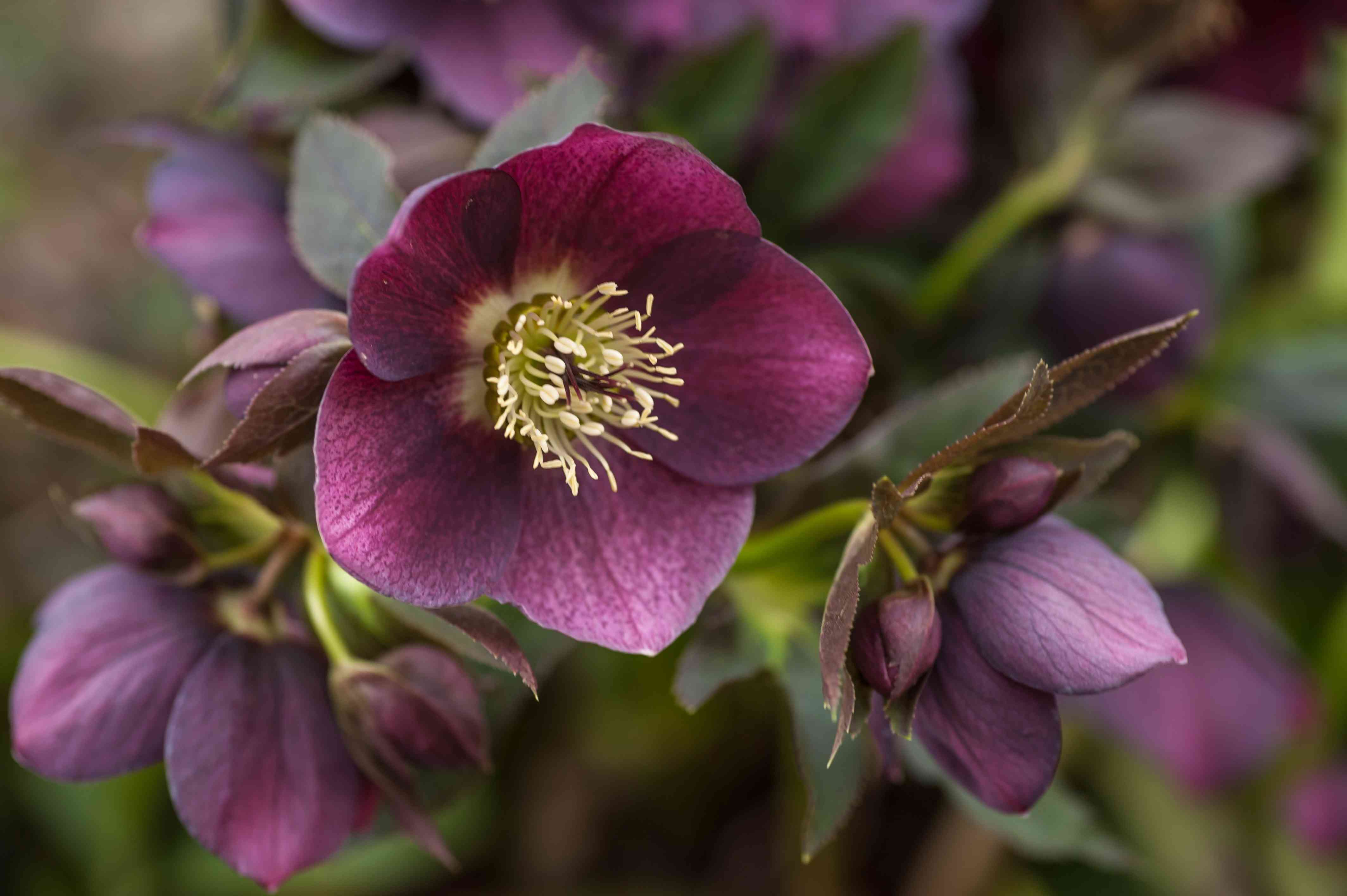
Spring is the best time for dividing hellebores, making it the ideal season to transfer them into containers. Maximize the beauty of your potted hellebores during this time.
Variety Suggestions
Many hellebores have extensive root systems, which can make container growing challenging. It’s essential that their roots have enough room to grow and access water and nutrients. If the pot is too small, the plant won’t thrive. Here are some varieties that do well in containers:
Hellebore ‘Champion’
Blooms start in February, though newly transplanted plants might skip a season. The pink buds open into creamy white flowers, with evergreen dark green foliage. It grows to about 15 inches tall and is hardy in zones 5-8. This variety prefers partial shade.

Hellebore ‘Pewter Leaf’
True to its name, this plant has beautiful silver leaves with green flowers. It grows to about 2 feet by 2 feet, making it a great choice for pairing with brightly colored annuals in containers.
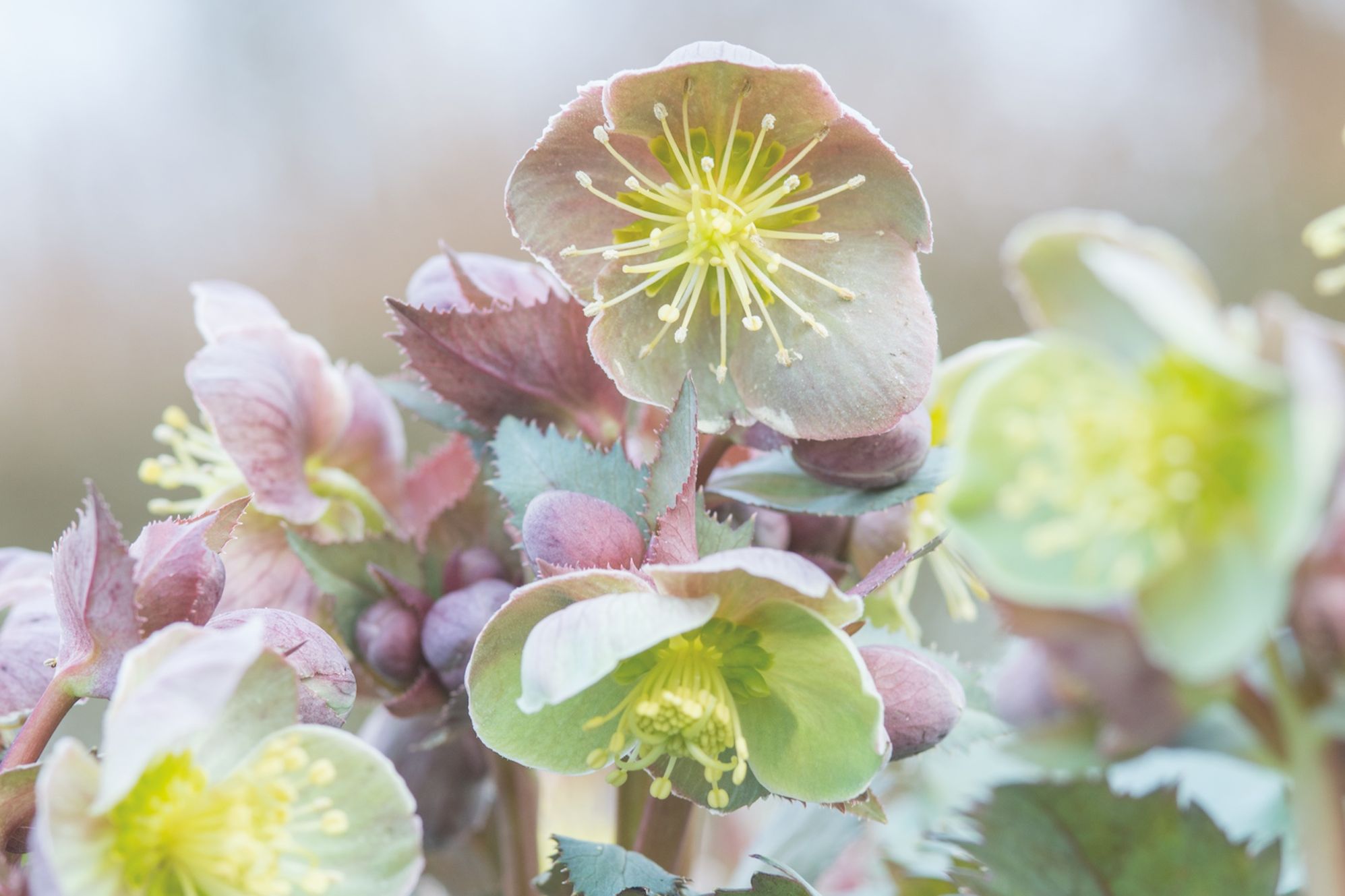
Hellebore ‘Pink Frost’
With burgundy stems and pink flowers, this variety is hardy from zones 5-9 and thrives in full to partial shade. ‘Pink Frost’ grows up to 15 inches tall.

Preparing Your Containers
Before planting anything, it’s a good idea to thoroughly clean your containers. This helps eliminate any pests or diseases.

Remove any old soil or plant material from the previous season. Scrub the pots or soak them in a tub. A diluted bleach or vinegar solution will ensure all harmful agents are removed.
If you’re using terracotta pots, cleaning will help moisten them, which keeps your plant hydrated once planted. If using plastic pots, skip the bleach and simply scrub to remove debris or salt and mineral buildup.
Pot and Container Size
The size of your container will depend on the plant’s size. Many garden centers offer smaller hellebore plants ideal for containers. These smaller plants work well in window boxes, small pots, or as part of a larger mixed container.

For a hellebore planted by itself, choose a container that’s at least two feet deep and wide. This will give the roots plenty of space to grow, ensuring a healthy, thriving plant.
Choosing the Right Soil
Before filling your container with garden soil, think again. It’s recommended to use potting soil for perennial plants or flowers in containers. Many potting soils come pre-mixed with basic fertilizers, providing the nutrients your plants need to thrive.

Garden soil tends to be too heavy and retains too much water, which can lead to problems with the roots. Excess water can weaken the roots and cause the plant to decline. Using potting soil also keeps the container lighter, making it easier to move when needed.
Choosing Companion Plants
While companion plants are not essential when growing hellebores in containers, they do add a nice touch. Hellebores can look elegant on their own in a container, making them perfect for placing on either side of a front door or along a walkway for a subtle spring effect.
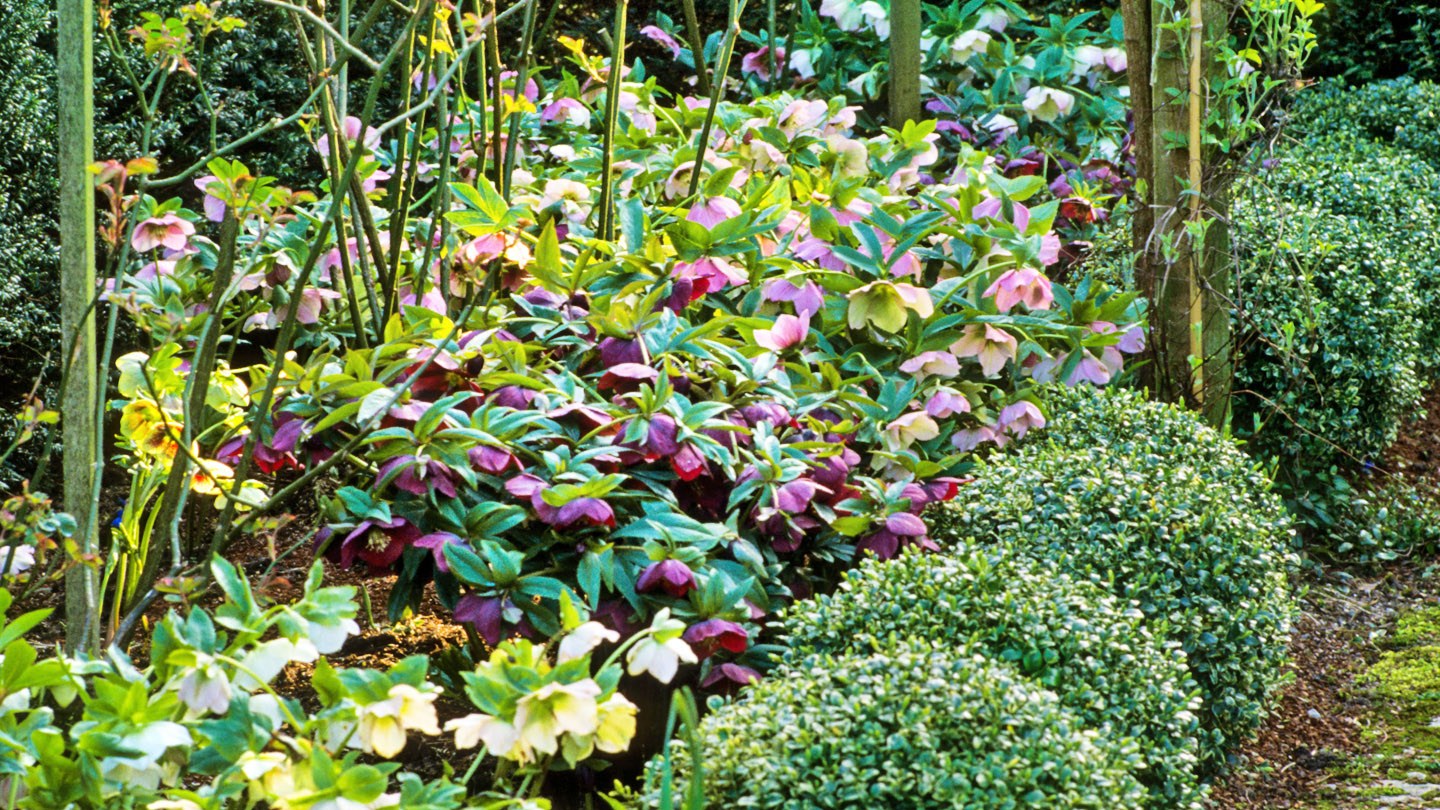
For a more vibrant spring display, consider combining hellebores with other spring plants like pansies, daffodils, or pussy willow or forsythia branches in window boxes or mixed containers. Adding ivy can create a trailing effect for extra charm.
However, keep in mind that hellebore flowers have a drooping nature. Avoid planting anything too close to the flowers, as this could obscure their beauty. This makes hellebores ideal as filler plants in containers.
Visualizing Your Container Garden
Once you’ve chosen your companion plants, think about how you’d like your container garden to look. Arrange taller plants in the back, medium-sized plants in the middle, and shorter or trailing plants along the sides and front.
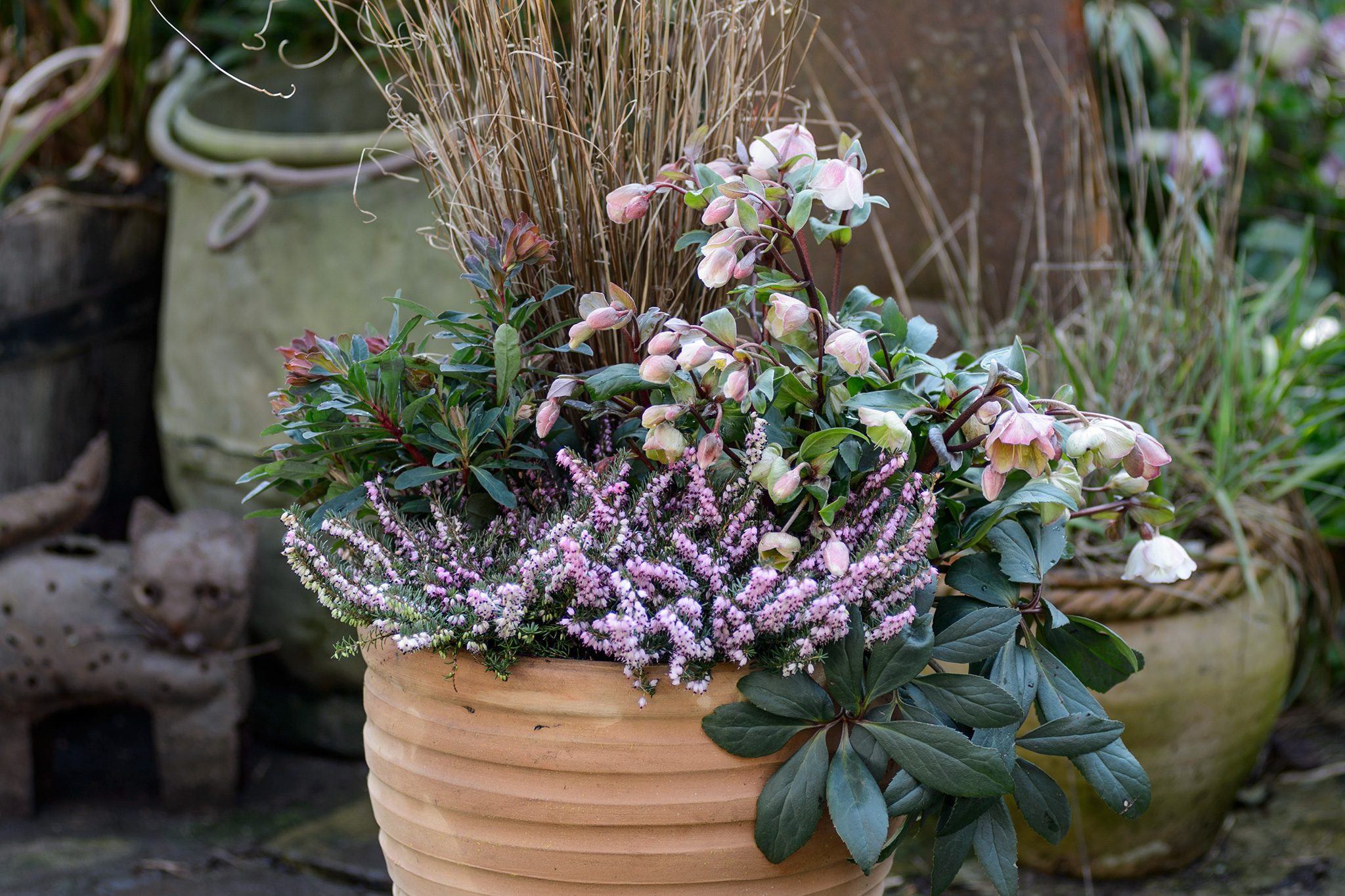
When planning a mixed container, I like to place the plants in the container before digging. This helps ensure you have the right number of plants and the arrangement looks balanced.
Planting with Care
Planting hellebores is straightforward. First, water the plant well while it’s still in its nursery pot.
Fill your container with soil, leaving some space at the top, and prepare your plants. Dig a small hole in the potting soil large enough for the hellebore.
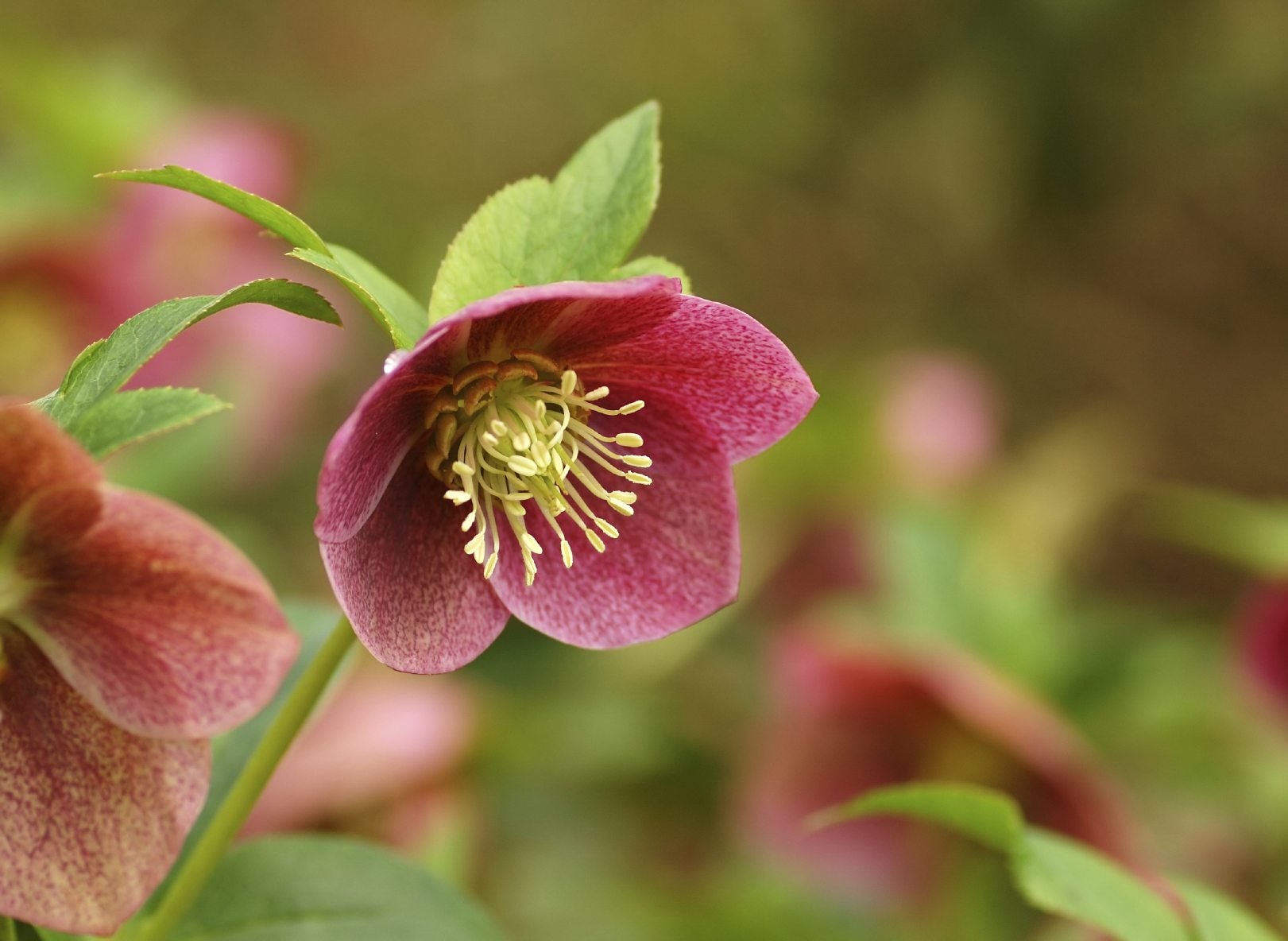
After removing the plant from its nursery pot, gently loosen the soil around the roots with your hands. Place the plant in the hole, fill in with soil, and lightly pack it. Water thoroughly until water runs out from the bottom of the container.
Light Requirements
Hellebores prefer shade during the summer, needing only a few hours of dappled sunlight to grow. In winter, they appreciate more sun, which is easy to provide by moving the pot to a sunnier spot.

Choosing the Plant’s Location
Hellebores do best in partial to full shade, whether planted in the garden or in containers. Ideal spots for your containers include a covered porch, a shady corner of your deck, or a wooded area where other plants may struggle to grow.

Place your containers near a window or an area you frequent in the spring to enjoy the beauty of your hellebore throughout the season.
Watering
Containers dry out faster than garden beds, so it’s essential to water your hellebores regularly, especially in the summer heat. A good watering twice a week should suffice. When temperatures rise, check the soil often—aim to keep the top inch of soil moist.

The easiest way to test is by sticking your finger into the soil. As the hellebore grows, you’ll need to water more frequently as the roots expand and the space in the pot becomes more limited.
Fertilizing
Hellebores benefit from balanced fertilization twice a year. For potted hellebores, you can use a slow-release fertilizer designed for flowering plants, often pre-mixed into potting soil. Aside from those two feedings, your hellebores won’t need much else to stay healthy and happy.
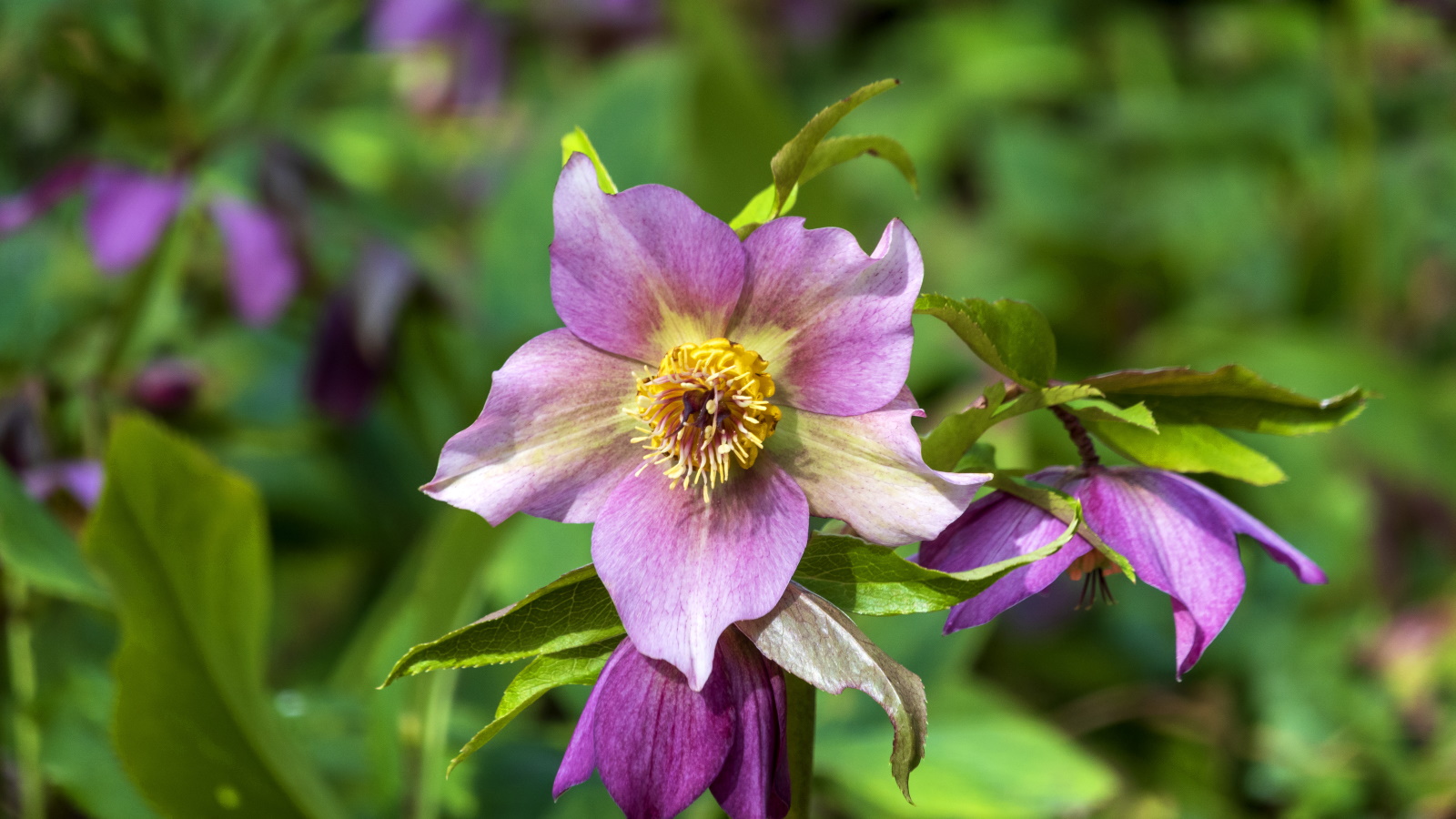
Deadheading
As your hellebore flowers begin to fade, you’ll want to deadhead them, just as you would if they were planted in your garden. Deadheading hellebores is a simple task. Use your favorite pruning shears and snip the spent flower just below the blossom.
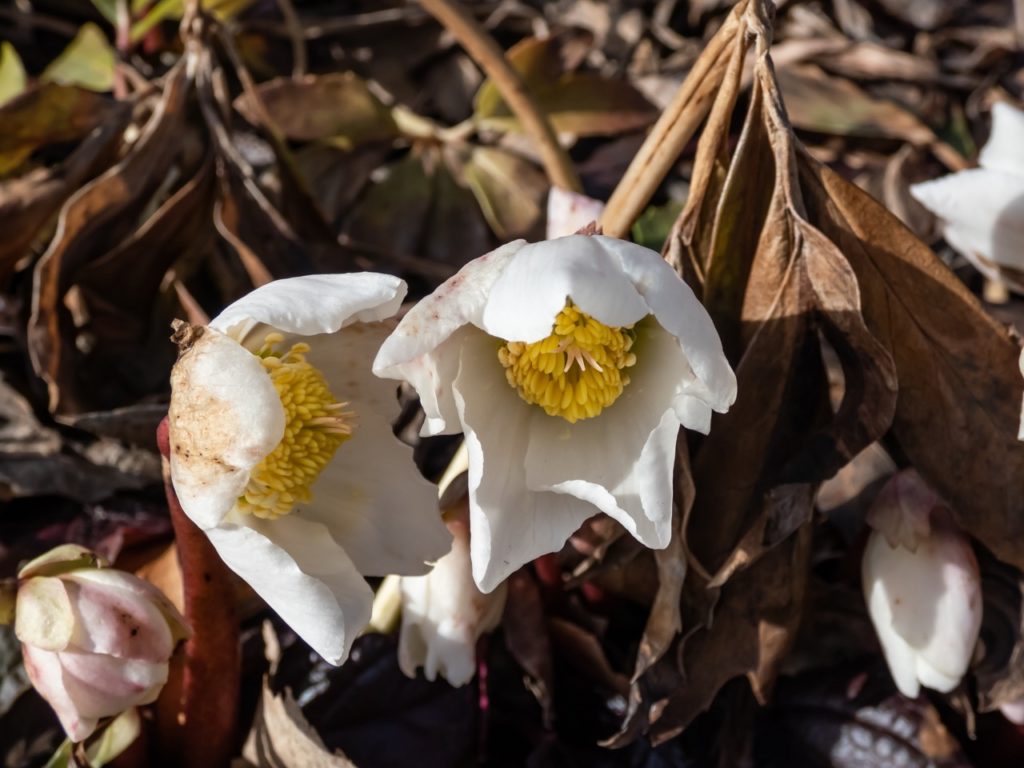
Hellebore flowers can self-sow their seeds, which may create a mess in your container. If you’re unaware the seeds have dropped, they could remain in the potting soil and sprout later in the season or even the following year if you reuse the soil.
Final Thoughts
Hellebores in containers are one of my favorite spring sights. They pair well with other spring-blooming annuals and bulbs and make a wonderful addition to shady perennial gardens. These containers often signal the start of the gardening season for many enthusiasts. Adding hellebores is a great way to bring a splash of spring color to your gardens and containers.
